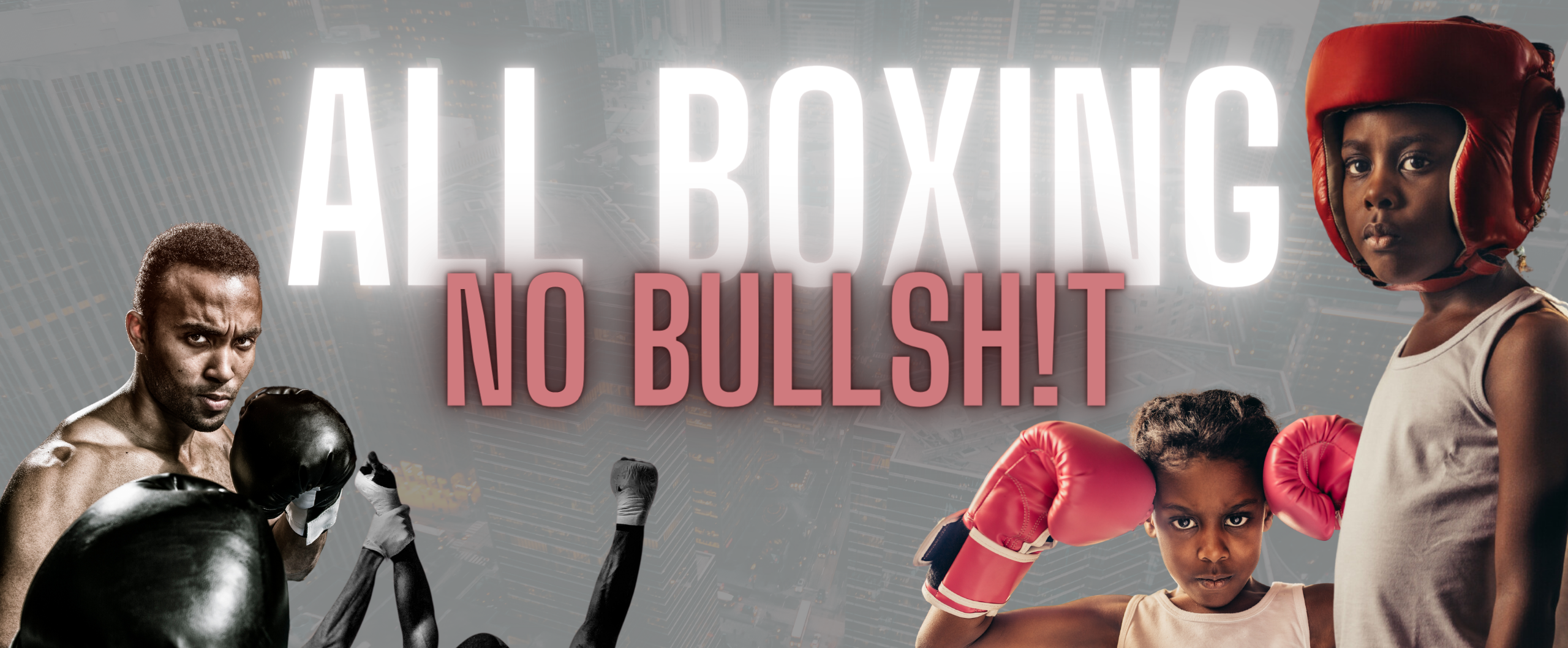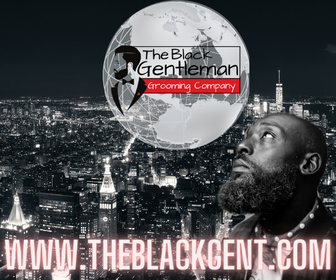Boxing History
Dodged by Floyd Patterson, Eddie Machen was the top contender who fought everyone
Published
6 months agoon
By
J. Humza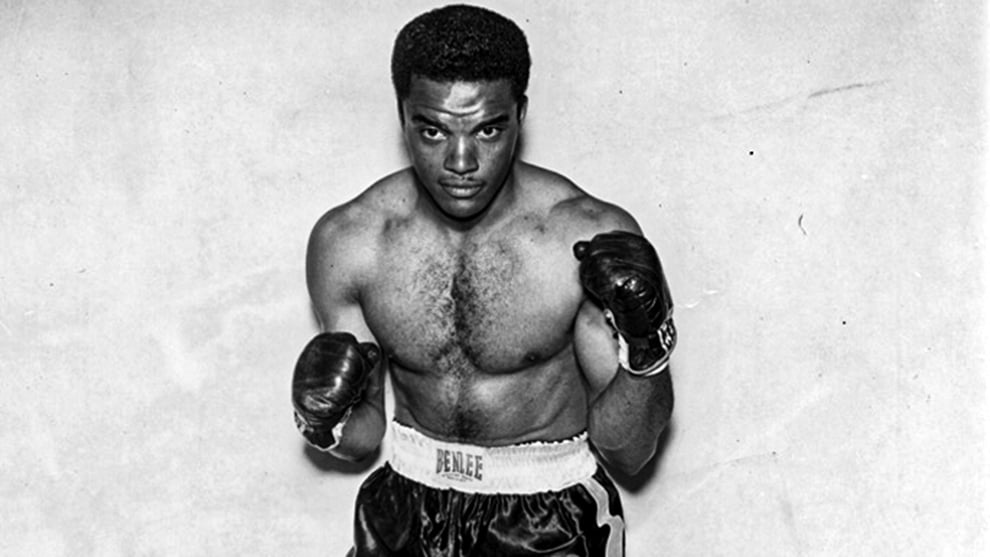
Name: Eddie Machen
Born: July 18, 1932
Died: August 8, 1972 at the age of 40
Career: 1955 to 1967
Record: 64 fights, 50 wins (29 by KO/TKO), 11 losses (3 by KO/TKO), 3 draws
Division: Weighty
Attitude: Orthodox
Titles: Pacific North West Champion
Main competitions
Victories won over: Howard King, Nino Valdes (twice), Johnny Summerlin, Joey Maxim **(twice), Bob Baker, Tommy Jackson*, Willi Besmanoff, Pat McMurty, Alex Miteff, Alonzo Johnson (twice), Wayne Bethea, Mike DeJohn (twice), Brian London *, Doug Jones*, Roger Rischer, Jerry Quarry *
Lost with: Ingemar Johansson**, Zora Folley*, Sonny Liston**, Harold Johnson**, Floyd Patterson**, Ernie Terrell**, Karl Mildenberger*, Manuel Ramos*, Joe Frazier**, Henry Clark, Boone Kirkman
Drawn from: Zora Folley, Cleveland Williams*
**Past/future World Title Version Holder
* Unsuccessful World Championship contender
The Eddie Machen Story
Machen was the fourth of six sons. He played basketball and football in high school, and he and his younger brother Paul (Paul boxed extensively as an amateur and had a brief professional career, but was later arrested and imprisoned for second-degree murder) both tried boxing.
Machen’s uncle, Dave Mills, boxed professionally. He started in the U.S. and lost to Sam Langford for the “World colored heavyweight title.” Mills also spent time in Chile and was 1-2 in three fights with Luis Firpo.
Mills began training and guiding Machen, but they fell out and Machen decided to entrust his future to others. It all proved to be wasted, as after just three amateur fights in 1952, Machen was convicted of armed robbery and spent three years in prison.
After his release, Machen took up boxing again and had his first professional fight in March 1955. In his first year, he was 11-0 with 10 wins inside the distance, six of them in the first round, and was already fighting ten rounds. This rapid rise continued in 1956 with eight more wins, including a points victory and then a knockout of world-class Nino Valdes, which earned Machen a world rating after only 13 months as a professional.
In 1957, he twice defeated former featherlight heavyweight champion Joey Maxim on points and won against top heavyweight contender Bob Baker. In November, he stopped Tommy Jackson, who had lost to Floyd Patterson for the heavyweight title just four months earlier.
The logical next step for Machen, already number one, was to win the title. Patterson’s manager, Cus D’Amato, controlled the title, and instead of giving Machen a chance, he had Patterson defend, just a month after the Jackson fight, against Pete Rademacher, who had won an Olympic gold medal at the 1956 Games but had never fought professionally.
Patterson won, but there was still no sign that D’Amato would let Machen fight for the title. Undaunted, Machen showed he wasn’t afraid of risk when he faced world No. 2 Zora Foley in April 1958. Machen was 24-0 at the time, and Foley had won his last 18 fights. The fight ended in a draw, leaving Machen as No. 1.
D’Amato now pitted Patterson against Texan Roy Harris, leaving Machen out in the cool again. Machen took a huge risk by agreeing to fight the hard-hitting Swede Ingemar Johansson in Sweden. Johansson, 20-0, had cleared out the European competition, knocking out Henry Cooper and stopping Joe Erskine, so Machen took the precaution of inserting a comeback clause into his contract.
In September 1956, before a record crowd at a boxing gala in Sweden, Johansson knocked down Machen three times in the first round, winning by kayo. D’Amato then had Patterson defend against Brian London in May 1959, even though London had lost his last fight to Henry Cooper.
After the London fight, D’Amato began arranging a Patterson vs. Johannson fight. Machen went to court, spending $16,000 of his own money on the re-fight clause in Johansson’s contract, and the court ruled in Machen’s favor, but the ruling was ignored and Johansson stopped Patterson in three rounds, winning the title.
Machen reeled off seven wins to stay in the game, but lost a unanimous decision to Foley in January 1960. Machen gained a reputation as a cautious fighter, but he never shied away from anyone. In September, he faced Sonny Liston, the most feared boxer in the world at the time.
Liston had won his last 23 fights over Mike DeJohn, Cleveland Williams, Nino Valdes, Roy Harris and Zora Foley, all coming within the distance. Machen taunted Liston throughout the fight but lost on points in twelve rounds. He rebounded and came back to face tough opposition, defeating Mike DeJohn twice, Brian London, Doug Jones, Roger Rischer and Alonzo Johnson.
He also drew with Cleveland Williams and lost only to featherlight heavyweight champion Harold Johnson. Machen finally got a fight with Floyd Patterson in July 1964, but Patterson was no longer champion. The fight took place in Sweden and in front of 40,000 Swedish fans Machen lost on points.
His only title shot came in March 1965 when he was defeated by Ernie Terrell for the vacant WBA belt. Machen continued to face good opponents, losing to Karl Mildenberger and Manuel Ramos but winning against the undefeated Jerry Quarry. The end of Machen’s career was in sight and he retired in May 1967 after losses to Joe Frazier, Henry Clark and Boone Kirkman.
Machen’s career outside the ring was troubled by unsettling events. Although he was the No. 1 contender, he had to work as a security guard to make ends meet, and his financial problems caused him to suffer from depression. He exhibited unpredictable behavior, and in 1963, a highway patrol came across Machen sitting in his car.
He wrote a suicide note to his wife and had a gun in the passenger seat. He was sent to a psychiatric hospital and became violent, requiring seven staff members to control him. He was sedated, but after another violent incident, he was put in a straitjacket and eventually given electroshock therapy before being released.
After his release in slow 1963, he resumed his career. In 1967, he filed for bankruptcy, listing debts of $66,000 and assets of just $13,000. In a repeat of his previous mental problems, he was again found parked in a vehicle in the same location where the original incident occurred, with a gun, but instead of being taken to the hospital, he was charged with possession of a firearm, fined, and released.
In 1968, he was arrested after a bar fight and later for drunk driving. He threatened to kill the policeman who pulled him over and attacked the policemen who arrested him. His wife divorced him and took his two children with her.
He was working as a longshoreman when a police officer found Machen’s body in the parking lot of the apartments where he lived. It was determined that he had either fallen or jumped from a third-story window of the building.
You may like
Boxing History
Bunny Sterling’s great legacy in British boxing
Published
1 month agoon
December 4, 2024
St Pancras’ BUNNY STERLING will always be remembered as the first black non-British-born player to win a British title. He was the first to benefit from rule changes introduced by the Board in 1968 and defeated one of the golden boys of British boxing, winning the title.
Mark Rowe had a very successful amateur career, culminating in winning a gold medal at the 1966 Commonwealth Games held in Perth, Australia. Representing England, Rowe overtook Scotsman Tom Imrie to win welterweight gold, sweet revenge for the Londoner after being knocked out by Imrie in the ABA final at the same weight just over three months earlier. When Rowe turned around two months later, it was in a blaze of publicity at the Royal Albert Hall.
Meanwhile, Bunny made his professional debut at the less austere Shoreditch Town Hall. Losing points over six rounds to Islington’s Joe Devitt BN stated that Sterling “was willing, threw one or two punches and always resisted. A boy from St Pancras given the chance to learn a trade would do well.”
Sterling came to the UK aged seven from Jamaica in 1955 and attended Fortescue boarding school in Twickenham, where he played rugby, football and cricket. He was also involved in boxing, and as an amateur at the BC Polytechnic University he came under the tutelage of the slow, great George Francis. Knowing a good player when he saw one, George encouraged Bunny to turn professional and stayed with him as his coach. A loss to Devitt was quickly followed by two more, but Bunny learned from those losses and quickly turned things around, winning the next seven.
By 1969, he was mixing it with artists such as Johnny Kramer, Wally Swift, Harry Scott and Dick Duffy. Despite losing to all four fighters, Sterling was selected by the management to fight in a British middleweight title eliminator against Denny Pleace and defeated him over nine rounds at the Anglo-American Sporting Club. Then came the final eliminator against Harry Scott and Sterling got his revenge by beating the Liverpool veteran of twelve years in Nottingham.
Sterling Bunny
Rowe won the British title at Wembley in May 1970, defeating fellow Liverpudlian Les McAteer in 14 rounds, and when he faced Sterling four months later in his first defense, most thought he would be able to finally defeat Sterling . BN was no exception and predicted Rowe to win after the break. The two fighters could not have had more contrasting careers, with Rowe winning his last 15 fights, mostly on major London events, and Bunny, who found it arduous to get fights, losing regularly and campaigning on the continent to find work.
Rowe’s trainer, Bill Chevalley, was already talking about pairing his boy with world champion Nino Benvenuti after he defeated Sterling, but those plans were thwarted by in-ring events at Wembley in September 1970. The Commonwealth title was also at stake, and Bunny, what was at stake BN called the “shock of the year” had nothing to do with it. He boxed on the back foot for the first two rounds, trying to avoid the powerful punches of the stalking Rowe, and then after catching Rowe’s head and causing a cut, Rowe charged at him, looking for an early stoppage.
This brought out the best in Sterling, who boxed better than ever before and managed to avoid Rowe’s desperate attacks. Rowe was then cut on the other side of his face, with blood pouring from two solemn cuts, and referee Wally Thom stopped the fight after four rounds, much to the annoyance of Rowe and his camp.
Bunny remained champion for four years, winning the Lonsdale belt outright before losing to Kevin Finnegan in February 1974. He was the first immigrant to win a British title and his place in British boxing history is assured.
Boxing History
Leotis Martin has beaten the fearsome heavyweight beast
Published
2 months agoon
November 29, 2024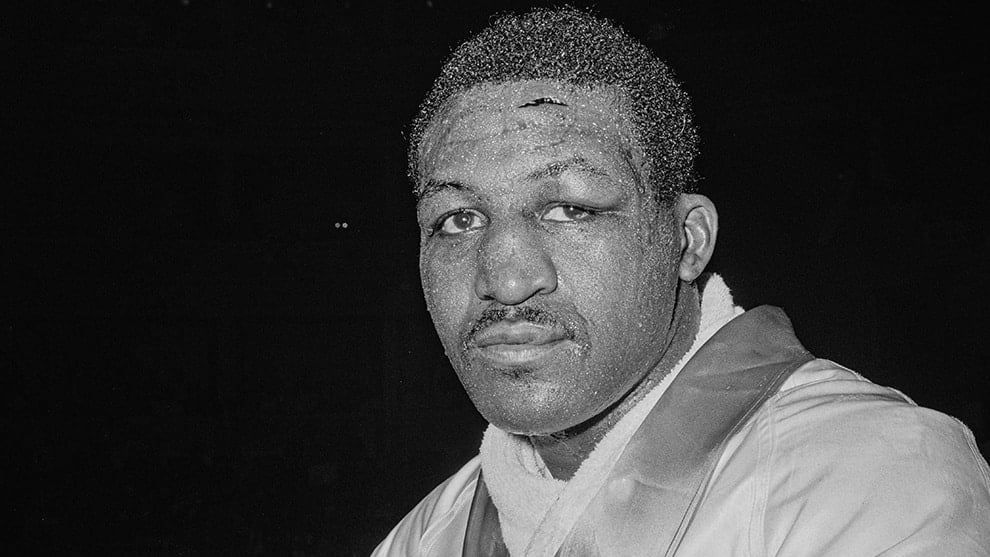
Name and surname: Leotis Martin
Born: March 10, 1939 Helena, Arkansas, USA
Died: November 20, 1995
Career: 1962–1969
Record: 36 fights, 31 wins (19 by KO/TKO), 5 defeats (2 by KO/TKO).
Division: heavyweight
Attitude: orthodox
Titles: NABF Heavyweight Champion
Major competitions
Goals scored over: Allan Harmon, Sonny Banks, Von Clay, Amos Johnson, Roberto Davila, Mariano Echevarria, Billy Daniels, Karl Mildenberger*, Thad Spencer, Alvin Lewis (twice), Roger Russell, Sonny Liston **
Lost to: Floyd McCoy, Jimmy Ellis**, Roger Russell, Henry Clark, Oscar Bonavena*
**Former/future world title version holder
*Unsuccessful challenger to the world title version
The boxing story of Leotis Martin
As an amateur, Martin had an outstanding record. In March 1960 at the Golden Gloves Tournament of Champions, he defeated future foe Jimmy Ellis in the 160-pound final and a month later. At the Intercity Golden Gloves (the predecessor of the National Golden Gloves), he won the 160-pound title. He also won the U.S. title in April 1960 again at 160 pounds (newborn Cassius Clay was the 178-pound champion that year), but lost in the semifinals of the U.S. Olympic trials in May. In 1961, he repeated his victory in the Intercity Golden Gloves, but lost in the semi-final of the 1961 national finals.
He moved to Philadelphia and was trained by Yank Durham, who also trained Joe Frazier. Martin had his first professional fight in Canada on January 26, 1962, against American Bobby Warthen, whom he defeated in the final of the Intercity Golden Gloves in 1960. He then crossed the border and scored three wins in Pennsylvania in 1962. In 1963, he won 9 -1 in ten fights and lost by upset KO to 14-14-1 Floyd McCoy.
He won five in a row, but one victory went to Sonny Banks. Banks, a ponderous puncher, knocked down Cassius Clay in the first round of their 1962 fight, only to be stopped in the fourth. On May 10, 1965, Banks was winning against Martin, who was badly shaken in the ninth throw, but delivered a counter right that sent Banks down, hitting his head on the canvas. Banks was taken from the ring on a stretcher. He never recovered and died three days later.
Martin returned to the ring with a victory in October 1965 and scored victories over Von Clay, Amos Johnson, Roberto Davila and Spaniard Mariano Echevarria. Victories over several underdogs pushed his record to 23-1 by June 1967. When Muhammad Ali refused to enlist in the U.S. Army, the WBA stripped him of his title and held a tournament to determine a novel champion. Martin was selected to compete in the qualifiers, and in the quarterfinals he drew with Jimmy Ellis, his rival from his amateur days, when they lost 1-1 in two fights. It wouldn’t be a heavyweight fight at this point.
They both climbed on the weights. Martin weighed 160 pounds in his first fight and weighed 192 pounds in this fight. Ellis weighed just 157 pounds and was 194 ¼. Ellis won easily. He was too swift for Martin from the start and Martin staggered repeatedly before the fight was stopped in the ninth throw as blood poured from a cut in Martin’s mouth. Ellis defeated Oscar Bonavena in the semifinals to win the vacant WBA title by majority decision over Jerry Quarry.
Martin came close to disappearing from the heavyweight scene when he lost a split decision to Roger Russell in November 1967. The year 1968 was a period of ups and downs for Martin. In April he went to Germany, where he defeated Karl Mildenberger three times and knocked him out in the seventh round.
The rollercoaster went down when he lost a majority decision to Henry Clark just twenty-two days after the Mildenberger fight, and then it went up again in May when he stopped Thad Spencer in nine rounds in one of the greatest heavyweight fights ever seen at the British ring. It was surprising to see two Americans on top of the Albert Hall show, but the fight will forever be remembered by those who saw it. Down went down the rollercoaster again when Martin was easily beaten on points by Oscar Bonavena in Buenos Aires in September.
Martin was dismissed as unpredictable and once again on the verge of being the favorite in the heavyweight division. But it was another uptick from the rollercoaster of 1968, when he faced Alvin “Blue” Lewis 19-1 in November and stopped Lewis in the ninth round in front of Lewis’ home fans. Lewis demanded a return and in February 1969, again in Detroit, Martin won by split decision. Martin retained Wendell Newton in October and made up for his 1967 loss to Roger Russell in November.
Martin’s fate was about to change. Since losing his second fight to Ali in 1965, Sonny Liston had won 14 straight fights, 13 by KO/TKO, and Martin was selected as winner number 15. They were to meet in Las Vegas on December 6, 1969. twelve rounds, and the inaugural title of the North American Boxing Federation is at stake. Liston had a 20-pound advantage over Martin and was three inches taller. The downside for Liston is that he’s a week away from his thirty-ninth birthday.
Yet Liston was still feared. Martin helped Liston prepare for fights with Floyd Patterson and Muhammad Ali, so he knew Liston well. He decided that if he could survive the early rounds, he would face the weakening Liston and have a chance to win. It didn’t look like Martin’s plan was going to work when Liston dropped him with a left hook overdue in the fourth round.
Martin survived the remaining 30 seconds and boxed in retreat, partly as part of his plan but also because of Liston’s hammer jab. Even on the retreat, Martin was finding the mark with his own jab and using his younger legs to set a faster pace than Liston wanted. After eight rounds of chasing the retreating Martin, Liston was ahead with three points on two cards and two points on the third, but Liston was tiring.
In the eighth round, Martin shook off a huge left hook and began to push Liston away with more punches. In the ninth, Martin missed Liston and then delivered a demanding cross to the head that stunned Liston. Martin landed lefts and rights and Liston fell face first onto the canvas, not moving for the 10 second count. This rollercoaster reached novel heights, with Martin earning the best win of his career and a shot at the world title.
But this is Leotis Martin and the roller coaster has taken one last cruel turn. Martin was diagnosed with retinal detachment and forced to retire. The injury was said to be from the Liston fights, but there was a mention that he was battling an injury from before the Liston fight. Eye surgery has advanced and a detached retina would not automatically be a reason for retirement today, but for Martin in 1969 it meant the end of his career.
During his boxing career from 1964, Martin worked full-time as a mechanic for a manufacturing company and continued this work until his retirement in 1995. In November of that year, he suffered a stroke caused by high blood pressure and complications of diabetes and died at the age of only 56.
Boxing History
Leotis Martin has beaten the fearsome heavyweight beast
Published
2 months agoon
November 29, 2024
Name and surname: Leotis Martin
Born: March 10, 1939 Helena, Arkansas, USA
Died: November 20, 1995
Career: 1962–1969
Record: 36 fights, 31 wins (19 by KO/TKO), 5 defeats (2 by KO/TKO).
Division: heavyweight
Attitude: orthodox
Titles: NABF Heavyweight Champion
Major competitions
Goals scored over: Allan Harmon, Sonny Banks, Von Clay, Amos Johnson, Roberto Davila, Mariano Echevarria, Billy Daniels, Karl Mildenberger*, Thad Spencer, Alvin Lewis (twice), Roger Russell, Sonny Liston **
Lost to: Floyd McCoy, Jimmy Ellis**, Roger Russell, Henry Clark, Oscar Bonavena*
**Former/future world title version holder
*Unsuccessful challenger to the world title version
The boxing story of Leotis Martin
As an amateur, Martin had an outstanding record. In March 1960 at the Golden Gloves Tournament of Champions, he defeated future foe Jimmy Ellis in the 160-pound final and a month later. At the Intercity Golden Gloves (the predecessor of the National Golden Gloves), he won the 160-pound title. He also won the U.S. title in April 1960 again at 160 pounds (youthful Cassius Clay was the 178-pound champion that year), but lost in the semifinals of the U.S. Olympic trials in May. In 1961, he repeated his victory in the Intercity Golden Gloves, but lost in the semi-final of the 1961 national finals.
He moved to Philadelphia and was trained by Yank Durham, who also trained Joe Frazier. Martin had his first professional fight in Canada on January 26, 1962, against American Bobby Warthen, whom he defeated in the final of the Intercity Golden Gloves in 1960. He then crossed the border and scored three wins in Pennsylvania in 1962. In 1963, he won 9 -1 in ten fights and lost by upset KO to 14-14-1 Floyd McCoy.
He won five in a row, but one victory went to Sonny Banks. Banks, a ponderous puncher, knocked down Cassius Clay in the first round of their 1962 fight, only to be stopped in the fourth. On May 10, 1965, Banks was winning against Martin, who was badly shaken in the ninth throw, but delivered a counter right that sent Banks down, hitting his head on the canvas. Banks was taken from the ring on a stretcher. He never recovered and died three days later.
Martin returned to the ring with a victory in October 1965 and scored victories over Von Clay, Amos Johnson, Roberto Davila and Spaniard Mariano Echevarria. Victories over several underdogs pushed his record to 23-1 by June 1967. When Muhammad Ali refused to enlist in the U.S. Army, the WBA stripped him of his title and held a tournament to determine a fresh champion. Martin was selected to compete in the qualifiers, and in the quarterfinals he drew with Jimmy Ellis, his rival from his amateur days, when they lost 1-1 in two fights. It wouldn’t be a heavyweight fight at this point.
They both climbed on the weights. Martin weighed 160 pounds in his first fight and weighed 192 pounds in this fight. Ellis weighed just 157 pounds and was 194 ¼. Ellis won easily. He was too speedy for Martin from the start and Martin staggered repeatedly before the fight was stopped in the ninth throw as blood poured from a cut in Martin’s mouth. Ellis defeated Oscar Bonavena in the semifinals to win the vacant WBA title by majority decision over Jerry Quarry.
Martin came close to disappearing from the heavyweight scene when he lost a split decision to Roger Russell in November 1967. The year 1968 was a period of ups and downs for Martin. In April he went to Germany, where he defeated Karl Mildenberger three times and knocked him out in the seventh round.
The rollercoaster went down when he lost a majority decision to Henry Clark just twenty-two days after the Mildenberger fight, and then it went up again in May when he stopped Thad Spencer in nine rounds in one of the greatest heavyweight fights ever seen at the British ring. It was surprising to see two Americans on top of the Albert Hall show, but the fight will forever be remembered by those who saw it. Down went down the rollercoaster again when Martin was easily beaten on points by Oscar Bonavena in Buenos Aires in September.
Martin was dismissed as unpredictable and once again on the verge of being the favorite in the heavyweight division. But it was another uptick from the rollercoaster of 1968, when he faced Alvin “Blue” Lewis 19-1 in November and stopped Lewis in the ninth round in front of Lewis’ home fans. Lewis demanded a return and in February 1969, again in Detroit, Martin won by split decision. Martin retained Wendell Newton in October and made up for his 1967 loss to Roger Russell in November.
Martin’s fate was about to change. Since losing his second fight to Ali in 1965, Sonny Liston had won 14 straight fights, 13 by KO/TKO, and Martin was selected as winner number 15. They were to meet in Las Vegas on December 6, 1969. twelve rounds, and the inaugural title of the North American Boxing Federation is at stake. Liston had a 20-pound advantage over Martin and was three inches taller. The downside for Liston is that he’s a week away from his thirty-ninth birthday.
Yet Liston was still feared. Martin helped Liston prepare for fights with Floyd Patterson and Muhammad Ali, so he knew Liston well. He decided that if he could survive the early rounds, he would face the weakening Liston and have a chance to win. It didn’t look like Martin’s plan was going to work when Liston dropped him with a left hook slow in the fourth round.
Martin survived the remaining 30 seconds and boxed in retreat, partly as part of his plan but also because of Liston’s hammer jab. Even on the retreat, Martin was finding the mark with his own jab and using his younger legs to set a faster pace than Liston wanted. After eight rounds of chasing the retreating Martin, Liston was ahead with three points on two cards and two points on the third, but Liston was tiring.
In the eighth round, Martin shook off a huge left hook and began to push Liston away with more punches. In the ninth, Martin missed Liston and then delivered a demanding cross to the head that stunned Liston. Martin landed lefts and rights and Liston fell face first onto the canvas, not moving for the 10 second count. This rollercoaster reached fresh heights, with Martin earning the best win of his career and a shot at the world title.
But this is Leotis Martin and the roller coaster has taken one last cruel turn. Martin was diagnosed with retinal detachment and forced to retire. The injury was said to be from the Liston fights, but there was a mention that he was battling an injury from before the Liston fight. Eye surgery has advanced and a detached retina would not automatically be a reason for retirement today, but for Martin in 1969 it meant the end of his career.
During his boxing career from 1964, Martin worked full-time as a mechanic for a manufacturing company and continued this work until his retirement in 1995. In November of that year, he suffered a stroke caused by high blood pressure and complications of diabetes and died at the age of only 56.

Logan Paul begs his boss to let him fight UFC star Conor McGregor

Conor Benn vows to sully Eubank’s name with a brutal knockout

Kell Brook on USYK vs FURY 2 – ‘I HAD TYSON WINNING BY A ROUND!’
Trending
-
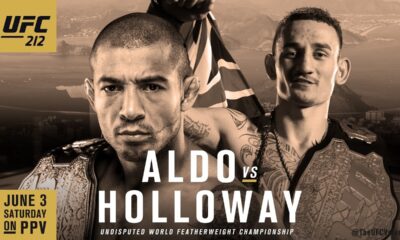
 MMA8 months ago
MMA8 months agoMax Holloway is on a mission at UFC 212
-
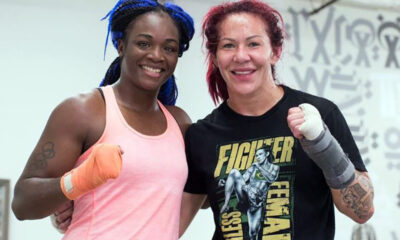
 MMA8 months ago
MMA8 months agoCris Cyborg ready to add a UFC title to her collection
-
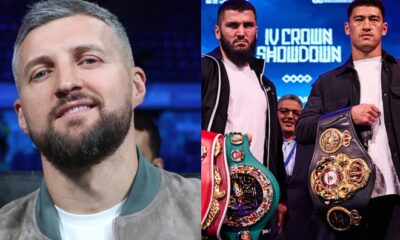
 Interviews3 months ago
Interviews3 months agoCarl Froch predicts that Artur Beterbiev vs Dmitry Bivol
-

 MMA8 months ago
MMA8 months agoThe Irish showed up in droves at the Mayweather-McGregor weigh-in
-
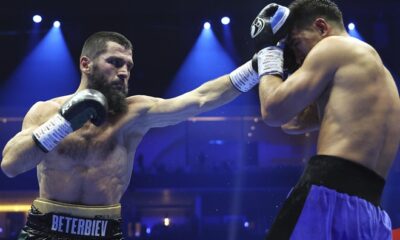
 Interviews3 months ago
Interviews3 months agoArtur Beterbiev vs Dmitry Bivol
-
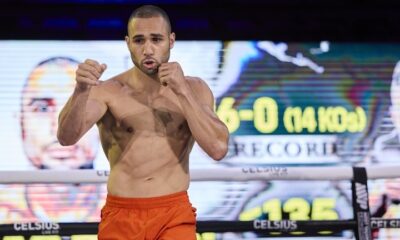
 Boxing6 months ago
Boxing6 months agoLucas Bahdi ready to test his skills against Ashton Sylve
-
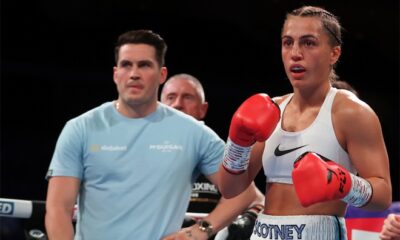
 Interviews8 months ago
Interviews8 months agoI fell in love with boxing again
-
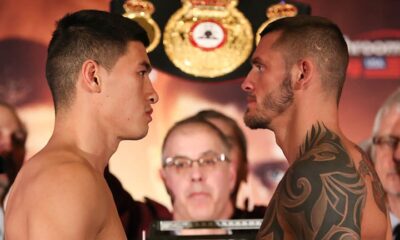
 Opinions & Features3 months ago
Opinions & Features3 months agoDmitry Bivol: The story so far

